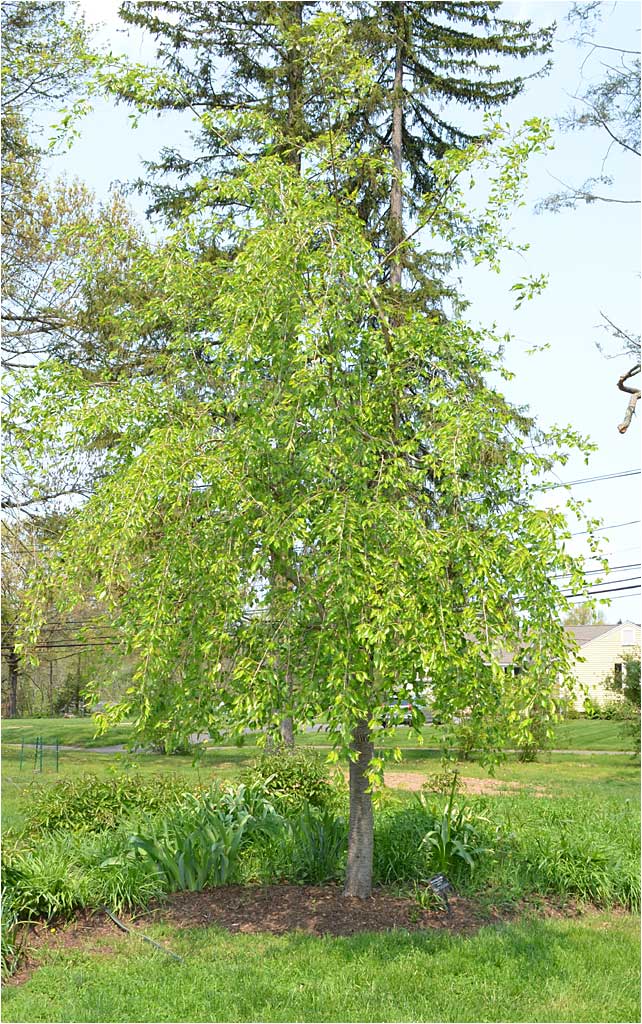62. WEEPING CHERRY
Prunus subhirtella x pendula

In the beautiful garden behind our Westmoor Park Visitor Center is a Weeping Cherry tree, also known as a Weeping Higan Cherry. It is a non-native ornamental cherry (Japan) and it represents a hybrid between two different cultivars in Japan. Hybrid cultivars are not unusual in the world of fruiting and ornamental trees - there are literally thousands of cultivars to choose from.
SPRING, EARLY LEAF & RACEME

Look for new growth starting in May - subtle at first with some new leafing but most of the tree's energy goes into making the structure (above, right) called a raceme. A raceme is a botanical term for a central stem supporting flowers/fruit on individual stalks. Not only will the flowers grow from the buds seen here, but on fruiting trees the raceme will also support the fruit.
NEW GROWTH

By mid-May the tree has fully developed its leaves AND the racemes which give it an unusual look in Spring (left). The flowers are just beginning to emerge which gives the tree a "fuzzy" appearance. Quite similar to that happens to our native Black Cherry tree.
SPRING, CHERRY BLOSSOMS

At approximately the third week of May, watch for an explosion of tiny cherry blossoms which turn the entire tree white. The cascading effect of the drooping branches ( pendula in the scientific name means "hanging down") coupled with the white flowers is quite spectacular.
SUMMER

In Summer, notice the weeping form of the Cherry tree, and also note the flowers beneath it. Best practice these days is to create beds of smaller flowers beneath and around trees to encourage the growth and sustenance of native wildlife. Not just pollinators and birds, but also the insects, fungi, and bacteria which play a huge role in keeping the whole ecosystem healthy.
WINTER FORM, BARK & GRAFT

Winter shows the sturdy trunk and drooping branches as well as the unusual bark. The horizontal marks on the bark are called lenticels (all trees have them, some more prominently than others) and aid in vital gas transfer to/from the living cells just inside the outer bark. About 4 ft. above the ground you also see pronounced vertical marking. This is the GRAFT line/mark where the flowering Cherry was grafted onto a different rootstock. Grafting onto different rootstock is a common practice for fruiting trees.